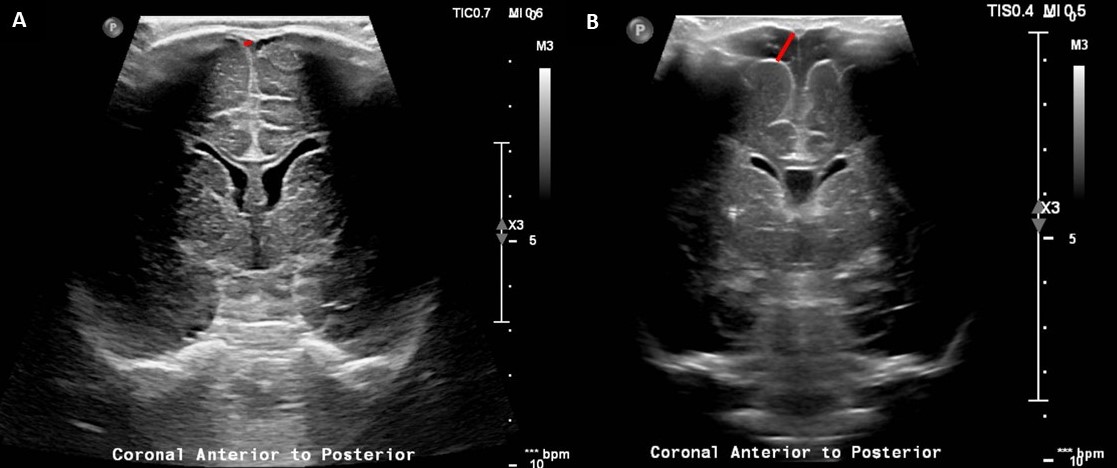Neonatology
Session: Neonatal General 8: ROP, Neurology
309 - Enlarged Subarachnoid Space in Very Low Birth Weight Infants with Neonatal Sepsis
Monday, May 6, 2024
9:30 AM - 11:30 AM ET
Poster Number: 309
Publication Number: 309.2913
Publication Number: 309.2913

Patricia N. Moran, MD (she/her/hers)
Neonatology Fellow
UVA
Charlottesville, Virginia, United States
Presenting Author(s)
Background: Sepsis is a common morbidity after premature birth. Both the infection and associated systemic inflammation can cause brain injury, particularly of the white matter, which is best assessed using brain MRI. Enlargement of the subarachnoid space (ESS), defined as a sinocortical width (SCW) > 3.5 mm on head ultrasound is being studied as a surrogate marker of white matter volume loss. Recent evidence suggests that the presence of ESS is associated with developmental delays in preterm infants. If confirmed, ESS could represent a useful biomarker of adverse outcome risk. Whether ESS occurs in very low birth weight (VLBW) infants with culture-positive sepsis has not been previously described.
Objective: To determine the prevalence of ESS in VLBW infants with culture-positive sepsis.
Design/Methods: Single center, retrospective cohort study of VLBW infants with culture-positive sepsis. Medical records were reviewed for mode of delivery, presence of prolonged rupture of membranes, delivery indication, antenatal steroids, infant characteristics, including gestational age (GA), birth weight, sex, race, ethnicity, pathogens identified on blood culture, days treated with antibiotics, and head ultrasound findings. Head ultrasounds at 36 weeks post menstrual age (PMA), or closest to discharge, whichever was later, were reviewed. The SCW was measured by two independent reviewers. Infants who did not have a head ultrasound at ≥36 weeks PMA were excluded.
Results: Forty-six VLBW infants with culture-positive sepsis were included (22 with early-onset sepsis (EOS) and 24 with late-onset sepsis (LOS)); see Table 1 for cohort demographics. The most common pathogen in the EOS group was E. Coli (23%), while CoNS was most common in LOS cases (79%, Table 1). Thirty-two percent of infants with EOS, and 46% with LOS had an enlarged subarachnoid space (representative example shown in Fig. 1). The inter-reliability score was excellent (Kappa = 0.91) for the diagnosis of ESS.
Conclusion(s): ESS is common in VLBW infants with culture-positive sepsis. Additional analysis is ongoing to assess the prevalence of ESS in VLBW infants without sepsis and among those treated for culture-negative sepsis. Future work will include investigating the prognostic utility of ESS diagnosis in preterm infants.

.png)
